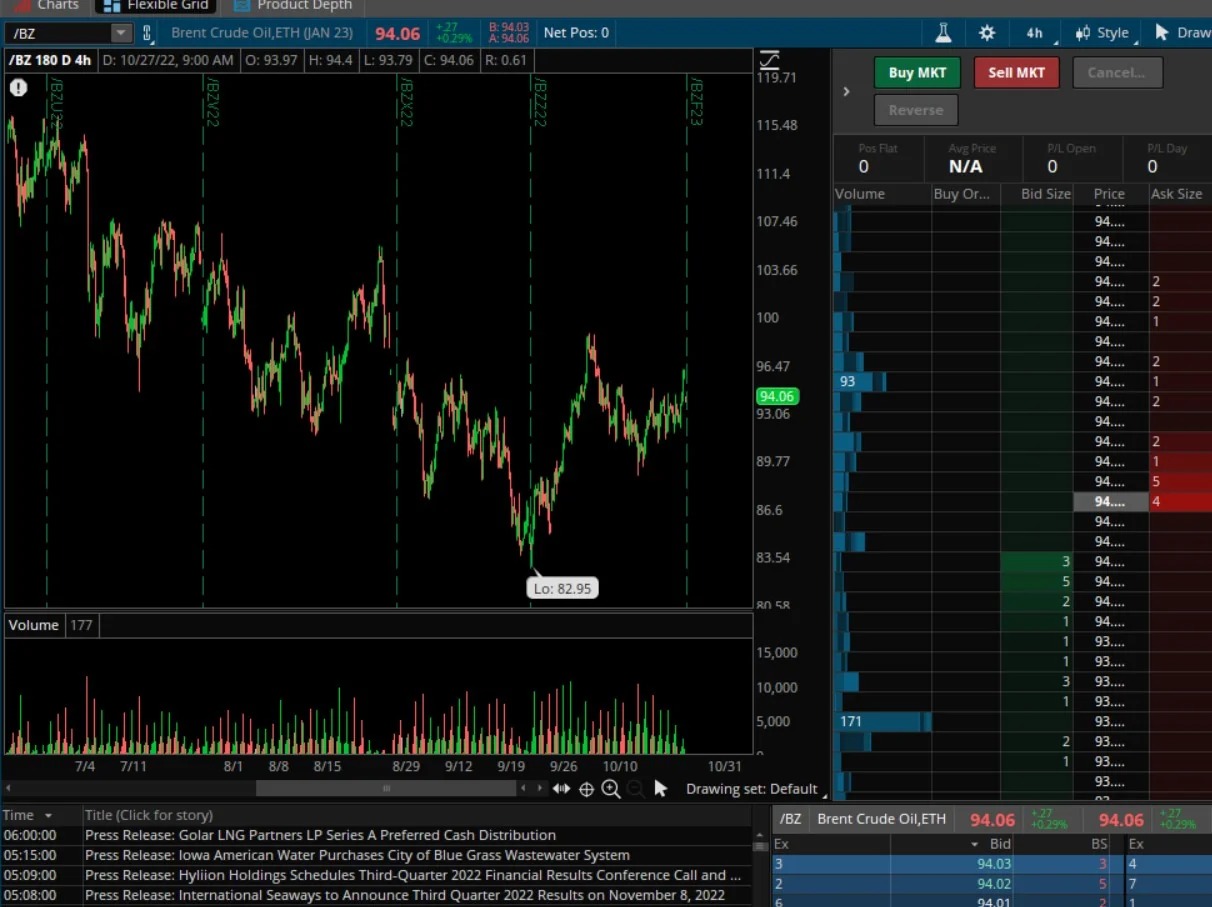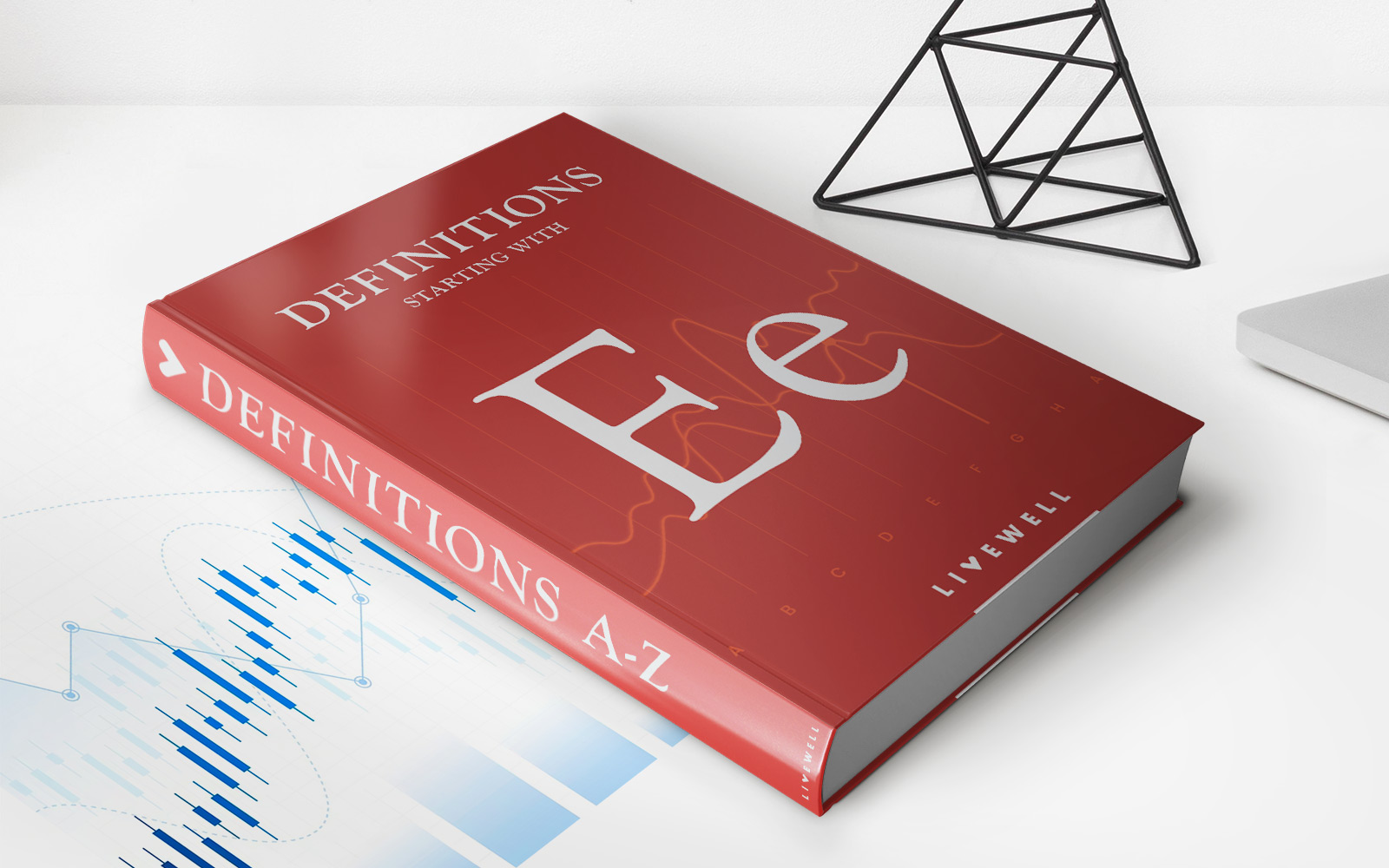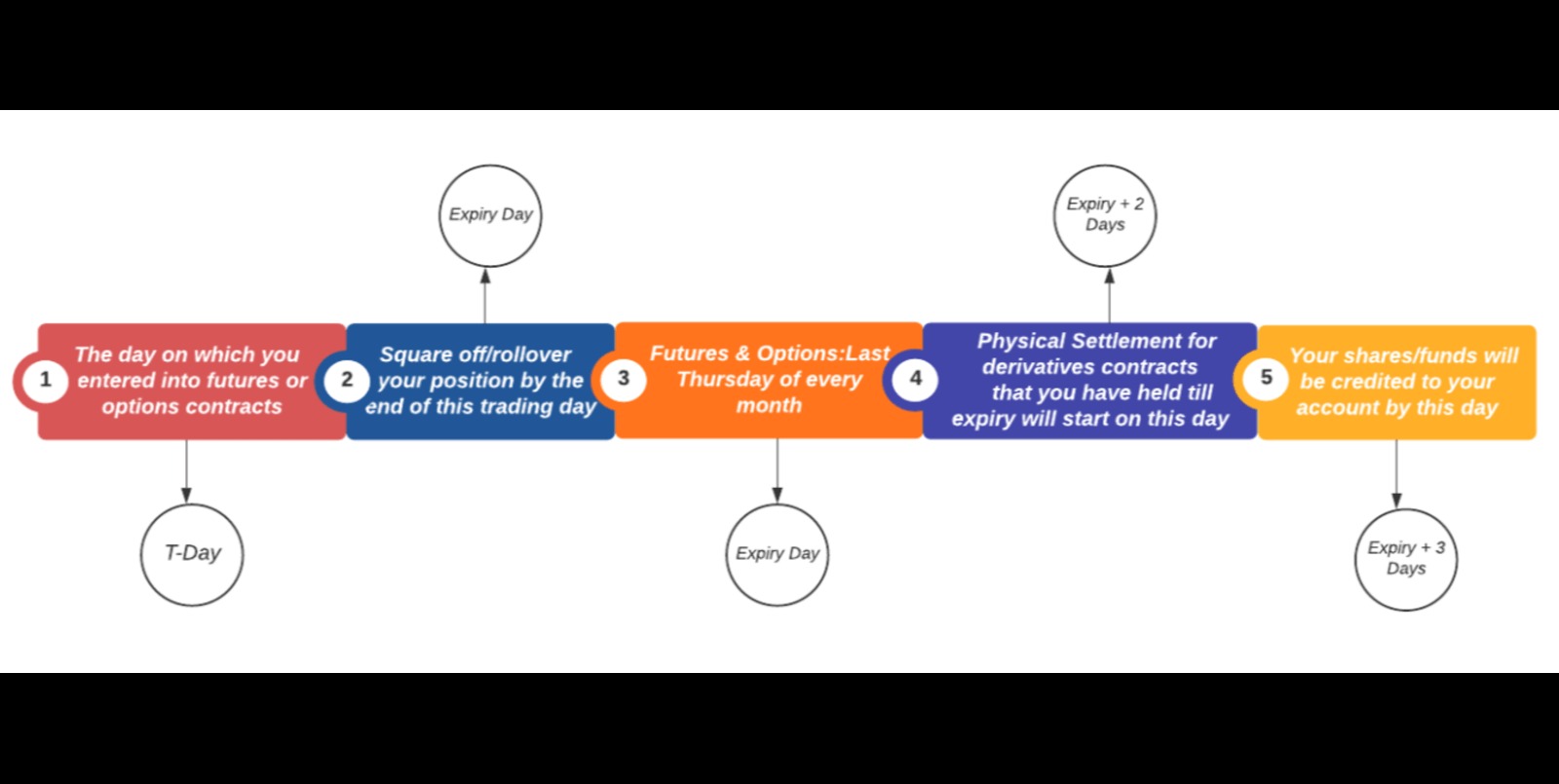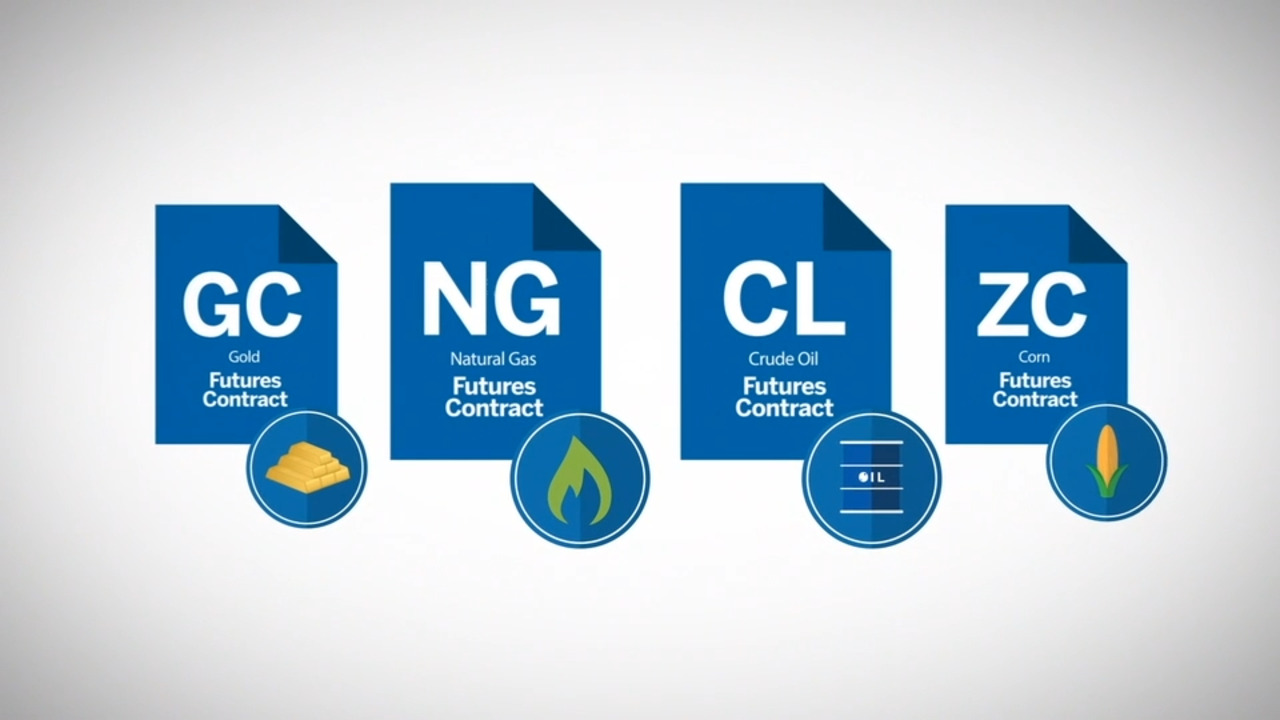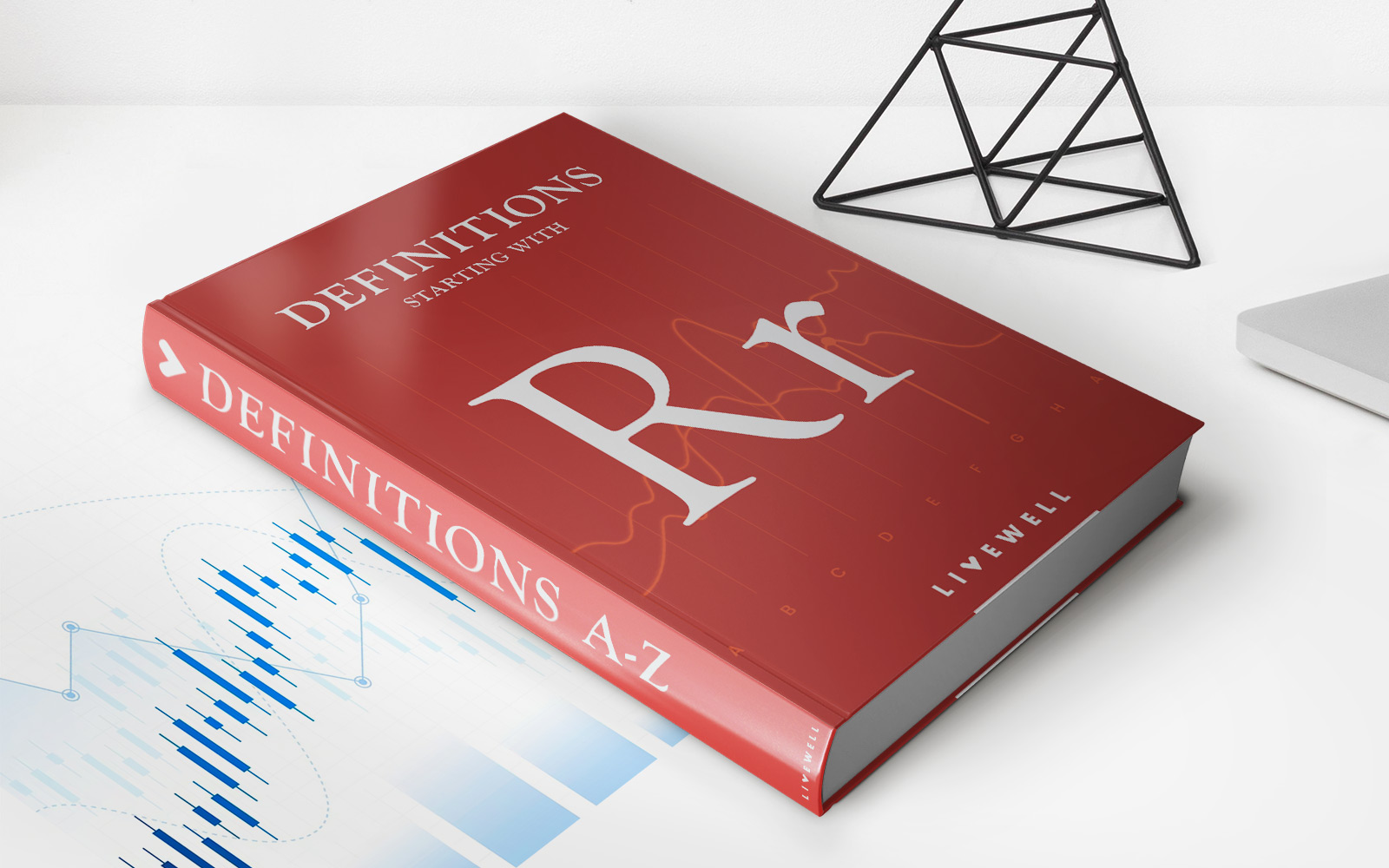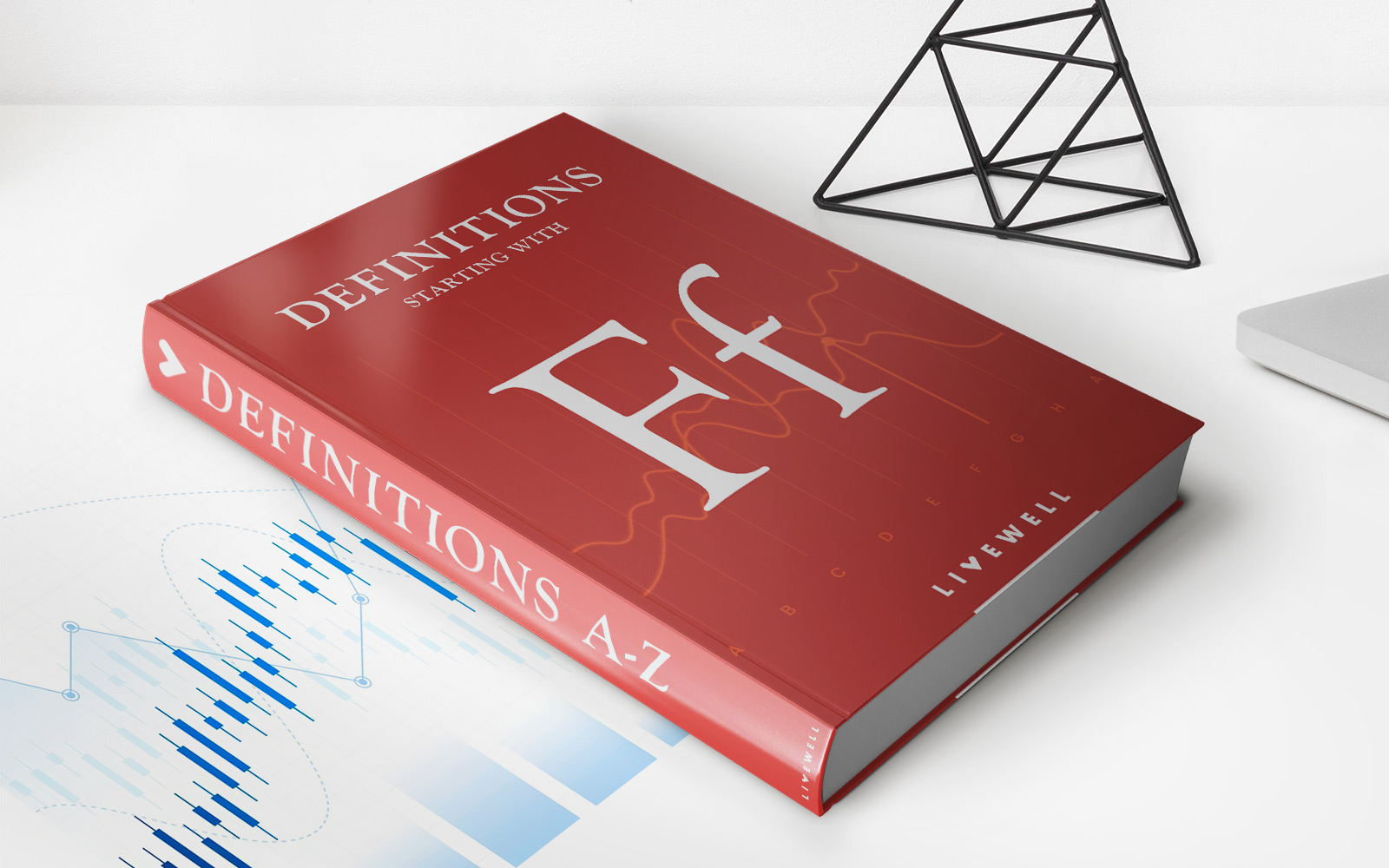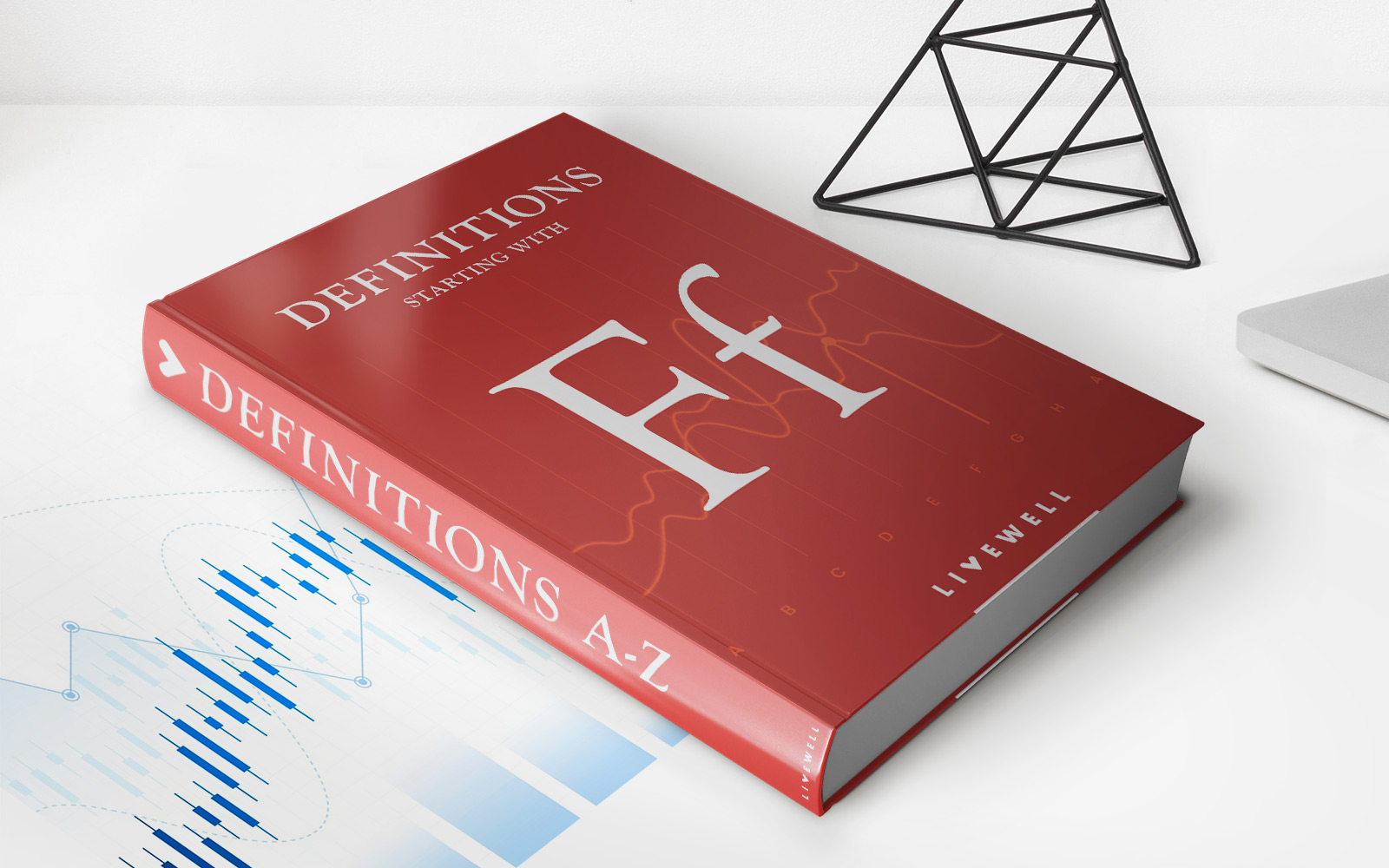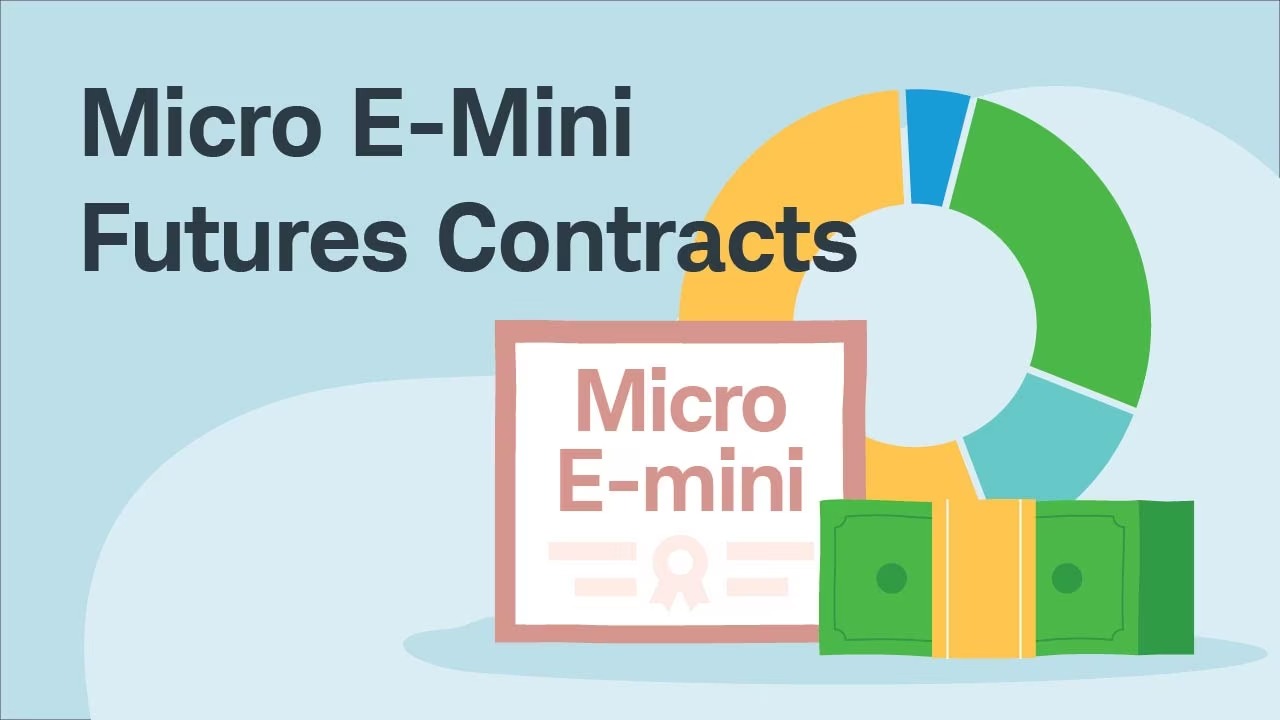

Finance
How Do E-Mini S&P Futures Contracts Work?
Published: December 23, 2023
Learn how e-mini S&P futures contracts function in the finance industry. Discover the trading mechanics and strategies involved to maximize your profits.
(Many of the links in this article redirect to a specific reviewed product. Your purchase of these products through affiliate links helps to generate commission for LiveWell, at no extra cost. Learn more)
Table of Contents
Introduction
When it comes to investing in the financial markets, there are a multitude of options available to traders. One popular instrument that has gained significant popularity over the years is the E-Mini S&P futures contract. As a derivative of the S&P 500 index, the E-Mini S&P futures contract allows traders to speculate on the future direction of the stock market.
But what exactly are E-Mini S&P futures contracts, and how do they work? In this article, we will delve into the intricacies of E-Mini S&P futures contracts, uncovering their mechanics, benefits, risks, and factors that drive their prices.
E-Mini S&P futures contracts are electronically traded futures contracts that track the performance of the S&P 500 index. The E-Mini designation is used to differentiate these contracts from the larger-sized S&P 500 futures contracts. Unlike traditional stock trading, where investors buy or sell shares of individual companies, futures contracts involve buying or selling a standardized contract for the underlying asset.
With E-Mini S&P futures contracts, traders can speculate on the future value of the S&P 500 index without actually owning the underlying stocks. These contracts provide market participants with an opportunity to profit from both bullish and bearish market movements, making them a versatile tool for investors.
One key characteristic of E-Mini S&P futures contracts is their leverage. Traders have the ability to control a larger position in the market with a relatively smaller amount of capital. This amplifies both potential profits and losses, making proper risk management crucial when trading these contracts.
The trading hours for E-Mini S&P futures contracts are extensive, providing flexibility to traders. They can be traded nearly 24 hours a day, five days a week, allowing market participants from different time zones to actively engage in trading.
In summary, E-Mini S&P futures contracts offer traders the opportunity to speculate on the future direction of the S&P 500 index in a leveraged and flexible manner. Understanding how these contracts work and the factors that influence their prices is essential for anyone considering adding them to their investment portfolio.
What are E-Mini S&P Futures Contracts?
E-Mini S&P futures contracts are a type of derivative financial instrument that allows traders to speculate on the future movement of the S&P 500 index. The S&P 500, often referred to as the Standard & Poor’s 500, is a widely recognized benchmark index that tracks the performance of 500 large publicly traded companies listed on U.S. stock exchanges.
Unlike traditional stocks, which represent ownership in a specific company, E-Mini S&P futures contracts represent an agreement to buy or sell the cash value of the S&P 500 index at a future date. These contracts are traded on regulated exchanges, such as the Chicago Mercantile Exchange (CME), and are settled in cash.
The term “E-Mini” refers to the electronically traded version of the S&P 500 futures contracts. They are smaller in size compared to the standard S&P 500 futures contracts, hence the name “E-Mini.” The smaller size makes them more accessible to individual traders, as the margin requirements are lower.
E-Mini S&P futures contracts have a specific contract size, which represents the notional value of the underlying S&P 500 index. Each contract covers a fraction of the value of the index, allowing traders to gain exposure to the broader market without having to invest in every individual stock within the index. The exact contract size may vary, but it is typically a fraction of the cash value of the S&P 500.
One important aspect of E-Mini S&P futures contracts is their expiration cycle. These contracts have quarterly expiration cycles, meaning they expire in March, June, September, and December. Each contract has a designated expiration month, and traders need to roll their positions over to the next contract if they wish to maintain their exposure to the S&P 500 beyond the expiration date.
E-Mini S&P futures contracts are highly liquid, which means there is a robust market with ample trading volume. This liquidity allows for efficient price discovery and ensures that traders can enter or exit positions with ease. The high liquidity of these contracts also makes them attractive to both speculative traders and hedgers looking to manage risk.
Overall, E-Mini S&P futures contracts provide traders with a vehicle to speculate on the direction of the S&P 500 index. They offer exposure to the broader stock market in a cost-effective and efficient manner, making them a popular choice among active traders and investors looking to diversify their portfolios.
Understanding How E-Mini S&P Futures Contracts Work
To fully grasp the mechanics of E-Mini S&P futures contracts, it is essential to understand the concept of futures trading. Futures contracts are financial agreements that oblige the buyer to purchase and the seller to sell a specified asset at a predetermined price and date in the future.
When it comes to E-Mini S&P futures contracts, the underlying asset is the S&P 500 index. The price of an E-Mini S&P futures contract reflects the anticipated value of the S&P 500 index at the future expiry date of the contract.
Traders have two main positions they can take when it comes to E-Mini S&P futures contracts: going long or going short. Going long means buying a contract with the expectation that the price of the underlying S&P 500 index will rise. Going short involves selling a contract with the belief that the price of the underlying index will decline.
When a trader goes long on an E-Mini S&P futures contract, they are essentially agreeing to buy the S&P 500 index at a specific price in the future. If the value of the index increases beyond the agreed-upon price, the trader can sell the contract and realize a profit. On the contrary, if the index decreases, the trader will incur a loss.
Conversely, when a trader goes short on an E-Mini S&P futures contract, they are committing to sell the S&P 500 index at a predetermined price in the future. If the index drops below the agreed-upon price, the trader can repurchase the contract at a lower price and profit from the difference. However, if the index rises, the trader will face losses.
It is important to note that most futures contracts are not held until their expiration date. Traders can exit their positions before the contract matures by entering into an offsetting trade. For example, if a trader bought an E-Mini S&P futures contract and later wanted to exit the position, they could sell an equivalent number of contracts to close out their position.
Margin requirements play a significant role in futures trading, including E-Mini S&P futures contracts. Traders are typically required to deposit a specific percentage of the contract’s value, known as the initial margin, to initiate a position. This initial margin serves as collateral in case the position incurs losses. Additionally, traders may need to meet maintenance margin requirements to avoid margin calls.
Overall, E-Mini S&P futures contracts provide traders with the opportunity to profit from the anticipated movement of the S&P 500 index. By understanding the mechanics and dynamics of futures trading, traders can effectively leverage these contracts to engage in speculative trading or hedge their existing positions in the stock market.
Benefits and Risks of Trading E-Mini S&P Futures Contracts
E-Mini S&P futures contracts offer a range of benefits and risks that traders should consider before engaging in trading. Understanding these advantages and disadvantages is crucial in determining whether these contracts align with your investment goals and risk tolerance. Let’s explore the benefits and risks associated with trading E-Mini S&P futures contracts.
Benefits of Trading E-Mini S&P Futures Contracts:
- Liquidity: E-Mini S&P futures contracts are highly liquid, which means there is a large number of buyers and sellers in the market. This liquidity ensures that traders can easily enter and exit positions without having to worry about market slippage.
- Leverage: Futures contracts offer leverage, allowing traders to control a larger position with a smaller amount of capital. This enables the potential for amplified profits, but it is important to note that leverage also amplifies losses.
- Diversification: Trading E-Mini S&P futures contracts provides exposure to the broader stock market through the S&P 500 index. This diversification allows traders to benefit from the performance of multiple large companies, reducing the risk associated with investing in individual stocks.
- Accessibility: E-Mini S&P futures contracts are accessible to a wide range of traders since they have lower margin requirements compared to standard S&P 500 futures contracts. This accessibility allows individual traders and smaller investors to participate in the market.
- Flexibility: E-Mini S&P futures contracts can be traded nearly 24 hours a day, five days a week. This flexibility allows traders to adjust their positions based on market events and news, making it suitable for those with different time zones and availability.
Risks of Trading E-Mini S&P Futures Contracts:
- Market Volatility: The stock market can be highly volatile, and E-Mini S&P futures contracts are directly impacted by market movements. Fluctuations in the S&P 500 index can result in significant gains or losses, so it is essential to be prepared for the inherent volatility of these contracts.
- Margin and Leverage Risks: While leverage can amplify profits, it can also magnify losses. Traders need to understand the risks associated with trading on margin, as adverse price movements can lead to margin calls and potential liquidation of positions.
- Expiration and Rollover: E-Mini S&P futures contracts have expiration dates, requiring traders to roll over their positions to the next contract if they wish to maintain exposure to the market. Failing to manage expiration dates effectively can result in increased costs and potential disruptions in trading strategies.
- Information and Market Risks: Traders must stay informed about market news, economic indicators, and other factors that influence the S&P 500 index. Failure to stay updated can result in incorrect market predictions and potential losses.
- Psychological Impact: Trading E-Mini S&P futures contracts can be stressful and emotionally challenging, especially during periods of market volatility. Traders need to manage their emotions, exercise discipline, and stick to their trading plans to mitigate psychological biases.
Before investing in E-Mini S&P futures contracts, it is crucial to assess your risk appetite, financial situation, and investment objectives. Understanding the benefits and risks associated with these contracts can help you make informed decisions and enhance your trading strategies.
Factors Affecting E-Mini S&P Futures Contracts Prices
E-Mini S&P futures contracts are influenced by a variety of factors that impact the underlying S&P 500 index. By understanding these factors, traders can make more informed decisions when engaging in E-Mini S&P futures trading. Let’s explore some of the key factors that can affect the prices of E-Mini S&P futures contracts.
Macroeconomic Factors:
Macroeconomic factors play a significant role in influencing the prices of E-Mini S&P futures contracts. These factors include:
- Interest Rates: Changes in interest rates can have a significant impact on stock market performance, including the S&P 500 index. Lower interest rates tend to stimulate economic growth and increase the attractiveness of investing in equities, resulting in potential upward pressure on E-Mini S&P futures prices.
- Economic Indicators: Economic indicators, such as GDP growth, inflation rates, employment data, and consumer sentiment, provide insights into the overall health of the economy. Positive economic indicators are generally associated with higher stock market performance and can influence E-Mini S&P futures prices.
- Corporate Earnings: The earnings reports of companies within the S&P 500 index can impact market sentiment and drive stock prices. Strong corporate earnings can lead to increased investor confidence, potentially resulting in higher E-Mini S&P futures prices.
Market Sentiment and Global Factors:
Market sentiment and global events can also affect the prices of E-Mini S&P futures contracts. These factors include:
- Investor Sentiment: The overall mood and sentiment of market participants can influence buying and selling decisions, impacting stock market performance and E-Mini S&P futures prices. Positive sentiment can lead to increased demand for S&P 500 futures contracts, potentially driving prices higher.
- Geopolitical Events: Geopolitical events, such as political instability, trade disputes, and geopolitical tensions, can have a significant impact on financial markets. Unfavorable geopolitical developments can create uncertainty and volatility, affecting E-Mini S&P futures prices.
- Market Volatility: Volatility in the broader financial markets can spill over to the S&P 500 index and E-Mini S&P futures contracts. Increased market volatility can lead to wider price fluctuations and greater trading opportunities, affecting E-Mini S&P futures prices.
Technical Factors:
Technical factors based on price and volume patterns can also influence E-Mini S&P futures prices. Traders often use technical analysis to identify trends, support and resistance levels, and other indicators that can guide their trading decisions.
These technical factors include:
- Support and Resistance Levels: Price levels where buying or selling pressure is expected to be significant can act as support or resistance levels. Traders often monitor these levels to determine potential entry or exit points, influencing E-Mini S&P futures prices.
- Chart Patterns: Chart patterns, such as triangles, head and shoulders, and double tops or bottoms, can provide insights into potential price reversals or continuation patterns. Traders who use technical analysis pay attention to these patterns, potentially impacting E-Mini S&P futures prices.
- Volume: Volume refers to the number of contracts traded within a specific time frame. High trading volume can indicate increased market participation and potential price movements, affecting E-Mini S&P futures prices.
It is important to note that these factors are interconnected, and changes in one factor can have ripple effects on others. Traders should stay informed about these factors, monitor market developments, and incorporate them into their analysis when trading E-Mini S&P futures contracts.
Trading Strategies for E-Mini S&P Futures Contracts
Successful trading of E-Mini S&P futures contracts requires a well-thought-out strategy and disciplined execution. Here are some popular trading strategies that traders employ when trading these contracts:
1. Trend Following:
The trend-following strategy aims to profit from the continuation of an established trend in the market. Traders using this strategy analyze price patterns and trend indicators to identify the direction of the market. Once a trend is identified, traders enter positions in the direction of the trend, aiming to ride the momentum until signs of a reversal or a change in trend emerge.
2. Breakout Trading:
Breakout trading involves identifying key support and resistance levels and entering positions as prices break above resistance or below support. Traders using this strategy aim to capitalize on significant price movements that occur when price levels are breached. They place stop-loss orders to manage risk and take profit orders to secure gains.
3. Mean Reversion:
The mean reversion strategy operates under the assumption that prices will eventually revert to their mean or average. Traders using this strategy look for instances when prices deviate significantly from their average and take positions opposite to the current trend, expecting prices to return to the mean. This strategy requires careful monitoring of price extremes and considering other indicators to identify potential turning points.
4. Scalping:
Scalping is a short-term trading strategy that aims to profit from small price movements. Traders using this strategy enter and exit positions quickly, often within minutes or seconds, with the goal of capturing small gains multiple times throughout the trading session. Scalpers rely on high trading volume and tight bid-ask spreads to execute frequent trades.
5. Hedging:
Hedging involves taking positions to offset potential losses in other investments. Traders using this strategy hold E-Mini S&P futures contracts to hedge against adverse movements in their stock portfolios. By doing so, they aim to protect their overall investment portfolio from market risks.
6. Pair Trading:
Pair trading involves taking offsetting positions in two related instruments, such as E-Mini S&P futures contracts and another correlated index or sector. The idea behind pair trading is to profit from the relative price movement between the two instruments. Traders using this strategy analyze historical price relationships and look for divergences to identify potential trading opportunities.
It is important to note that no single strategy guarantees success in trading E-Mini S&P futures contracts. Traders should carefully evaluate their risk tolerance, market conditions, and desired investment goals before selecting a strategy. Additionally, thorough backtesting and practice are recommended to gain familiarity and confidence in executing chosen strategies.
Conclusion
E-Mini S&P futures contracts offer traders the opportunity to participate in the performance of the S&P 500 index, providing exposure to the broader stock market in a cost-effective and flexible manner. Understanding the mechanics of these contracts, along with the factors that influence their prices, is essential for successful trading.
Benefits of trading E-Mini S&P futures contracts include liquidity, leverage, diversification, accessibility, and flexibility. Traders can enter and exit positions with ease, control larger market positions with smaller capital, gain exposure to multiple companies within the S&P 500 index, and trade nearly 24 hours a day, five days a week.
However, trading E-Mini S&P futures contracts also comes with risks. Market volatility, margin and leverage risks, expiration and rollover considerations, information and market risks, and psychological impacts are factors that traders need to be aware of and manage effectively.
Factors influencing E-Mini S&P futures contract prices include macroeconomic factors, market sentiment, global events, and technical factors. Understanding these factors can help traders make informed decisions based on market conditions and indicators.
Various trading strategies, such as trend following, breakout trading, mean reversion, scalping, hedging, and pair trading, can be employed when trading E-Mini S&P futures contracts. Traders should select a strategy that aligns with their risk tolerance, investment goals, and market conditions.
In conclusion, E-Mini S&P futures contracts provide a versatile and accessible avenue for traders to engage in speculation, risk management, and portfolio diversification. However, traders must thoroughly understand the intricacies, risks, and factors that drive these contracts to make informed trading decisions and effectively navigate the dynamic nature of the market.
